58 results
3 - Sex in Constantinople in the Sixth Century ce
-
-
- Book:
- The Cambridge World History of Sexualities
- Published online:
- 26 April 2024
- Print publication:
- 16 May 2024, pp 47-66
-
- Chapter
- Export citation
“There Can Be No Agreement to Take up Arms against the Turks Unless We First Restore the Empire”: The Fall of Constantinople and the Rise of a New Political Dynamic in the Holy Roman Empire, 1453–1467
-
- Journal:
- Austrian History Yearbook , First View
- Published online by Cambridge University Press:
- 24 April 2024, pp. 1-14
-
- Article
-
- You have access
- Open access
- HTML
- Export citation
Seeing Byzantium through Edwin Freshfield's eyes: Arts and Crafts, antiquarianism, and learned societies at the end of the nineteenth century
-
- Journal:
- Byzantine and Modern Greek Studies / Volume 48 / Issue 1 / April 2024
- Published online by Cambridge University Press:
- 08 March 2024, pp. 120-147
- Print publication:
- April 2024
-
- Article
-
- You have access
- HTML
- Export citation
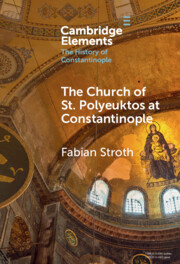
The Church of St. Polyeuktos at Constantinople
-
- Published online:
- 16 February 2024
- Print publication:
- 21 March 2024
-
- Element
- Export citation
4 - Knowledge Displaced
-
- Book:
- Feeding the Mind
- Published online:
- 07 October 2023
- Print publication:
- 05 October 2023, pp 120-154
-
- Chapter
- Export citation
Chapter 2 - The Late Emergence of the Eastern Notitia System (395–450)
-
- Book:
- The Field Armies of the East Roman Empire, 361–630
- Published online:
- 27 April 2023
- Print publication:
- 11 May 2023, pp 23-47
-
- Chapter
- Export citation
Chapter 3 - The “Classic” Phase of the Eastern Field Armies (450–506)
-
- Book:
- The Field Armies of the East Roman Empire, 361–630
- Published online:
- 27 April 2023
- Print publication:
- 11 May 2023, pp 48-66
-
- Chapter
- Export citation
4 - The Emperor in the Capital and Provinces
-
- Book:
- Caesar Rules
- Published online:
- 23 November 2022
- Print publication:
- 08 December 2022, pp 260-325
-
- Chapter
- Export citation
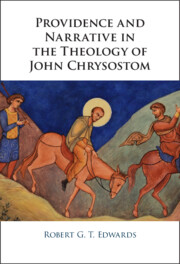
Providence and Narrative in the Theology of John Chrysostom
-
- Published online:
- 01 December 2022
- Print publication:
- 15 December 2022
2 - Ethos of the “Slave-Soldiers” Regime
-
- Book:
- The Mamluk Sultanate
- Published online:
- 05 May 2022
- Print publication:
- 26 May 2022, pp 53-79
-
- Chapter
- Export citation
1 - From Rome to Constantinople
- from Part I - Ethnicity and Identity in the Roman Empire
-
-
- Book:
- Rome: An Empire of Many Nations
- Published online:
- 14 April 2022
- Print publication:
- 21 April 2022, pp 17-28
-
- Chapter
-
- You have access
- Open access
- HTML
- Export citation
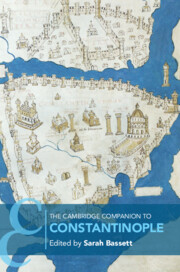
The Cambridge Companion to Constantinople
-
- Published online:
- 17 March 2022
- Print publication:
- 17 March 2022
1 - From Rome to Constantinople
- from Part I - Ethnicity and Identity in the Roman Empire
-
-
- Book:
- Rome: An Empire of Many Nations
- Published online:
- 04 August 2021
- Print publication:
- 23 September 2021, pp 17-28
-
- Chapter
- Export citation
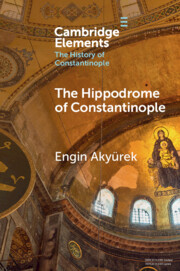
The Hippodrome of Constantinople
-
- Published online:
- 06 September 2021
- Print publication:
- 07 October 2021
-
- Element
- Export citation
11 - Byzantium
- from Part III - Norms, Values and Their Propagation
-
-
- Book:
- Political Culture in the Latin West, Byzantium and the Islamic World, c.700–c.1500
- Published online:
- 11 August 2021
- Print publication:
- 26 August 2021, pp 290-329
-
- Chapter
- Export citation
Reassessing a Late Byzantine masterpiece: the Deesis mosaic in the Hagia Sophia of Constantinople
-
- Journal:
- Byzantine and Modern Greek Studies / Volume 45 / Issue 2 / October 2021
- Published online by Cambridge University Press:
- 02 July 2021, pp. 166-183
- Print publication:
- October 2021
-
- Article
- Export citation
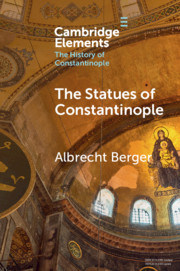
The Statues of Constantinople
-
- Published online:
- 18 June 2021
- Print publication:
- 15 July 2021
-
- Element
- Export citation
10 - Icons in the Adriatic before the Sack of Constantinople in 1204
-
-
- Book:
- Byzantium, Venice and the Medieval Adriatic
- Published online:
- 26 March 2021
- Print publication:
- 15 April 2021, pp 245-275
-
- Chapter
- Export citation
12 - Venice in the Twelfth Century
-
-
- Book:
- Byzantium, Venice and the Medieval Adriatic
- Published online:
- 26 March 2021
- Print publication:
- 15 April 2021, pp 296-315
-
- Chapter
- Export citation
13 - Venice, the Ionian Sea and the Southern Adriatic after the Fourth Crusade
-
-
- Book:
- Byzantium, Venice and the Medieval Adriatic
- Published online:
- 26 March 2021
- Print publication:
- 15 April 2021, pp 316-327
-
- Chapter
- Export citation



